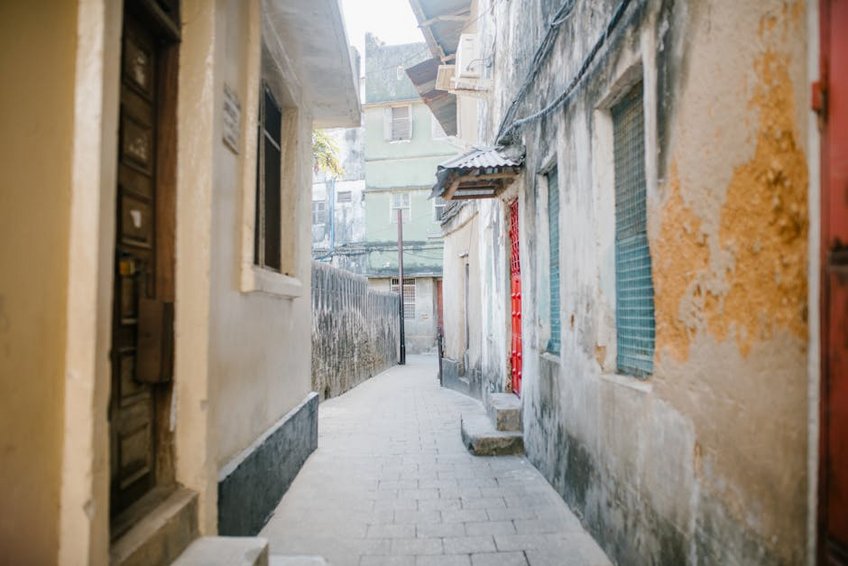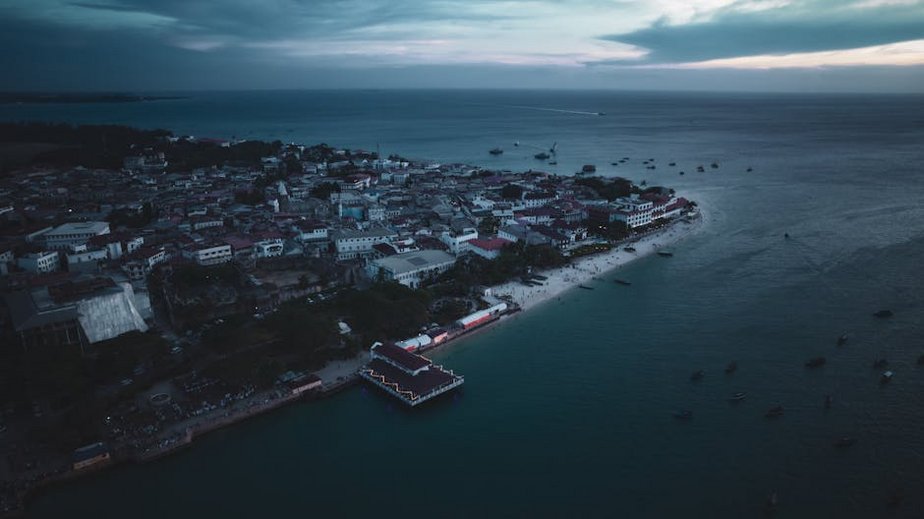Tanzania Zanzibar Stone Town: Historic Swahili Coast Gem
Stone Town in Zanzibar delivers a captivating fusion of African, Arab, Indian, and European influences across its labyrinthine alleys and coral stone buildings. This UNESCO World Heritage site preserves centuries of trading history through its ornate doors, bustling markets, and waterfront fortifications. Your Tanzania Zanzibar Stone Town exploration uncovers spice trade legacies, architectural marvels, and vibrant local culture within walking distance.
Essential Stone Town Information
Zanzibar’s historic center spans approximately 96 hectares along the western shore, featuring over 1,700 historic buildings constructed from coral stone. The town served as the capital of the Zanzibar Sultanate and a major hub for the Indian Ocean trade routes from the 19th century. Its unique urban fabric combines Swahili, Islamic, and colonial European elements in a dense, organic street pattern.
History and Cultural Background
Stone Town’s development accelerated under Omani Sultan Seyyid Said, who moved his capital from Muscat to Zanzibar in 1840. The architecture reflects this era with characteristic Zanzibari doors featuring intricate brass carvings and Arabic inscriptions. These doors symbolized wealth and status while providing security in the densely packed urban environment.
UNESCO World Heritage Status
Stone Town earned UNESCO designation in 2000 for its outstanding universal value as a living historical town. The recognition highlights its role as a principal trading port in East Africa and its exceptional architectural mixture. Preservation efforts focus on maintaining authentic building techniques while accommodating modern needs.
- Founded as a fishing village in the 16th century, Stone Town evolved into a major trading center under Omani rule from the 1690s onward, with peak influence during the 19th century spice and slave trades.
- The architectural style combines Swahili techniques with Persian, Indian, and European elements, creating unique structures with mangrove pole ceilings, carved balconies, and thick coral rag walls.
- Cultural significance extends beyond architecture to include taarab music, Swahili poetry, and culinary traditions that blend African staples with Arabian and Indian flavors across generations.
- Budget travelers spend $50-80 daily using hostels like Lost & Found ($15-25/night), local eateries for $5-10 meals, and self-guided exploration with minimal paid attractions beyond the $10 House of Wonders entry fee.
- Mid-range visitors budget $100-150 daily for hotels like Tembo House ($70-120/night), guided historical tours at $25-40, and restaurant meals at Mercury’s or Lukmaan for $15-25 including seafood specialties.
- Luxury experiences cost $200-350 daily at properties like Park Hyatt Zanzibar ($200-300/night), private guides at $50-75 daily, fine dining at The Rock ($60-100 meals), and spice farm tours with transportation included.
- Zanzibar Tourism Authority
- UNESCO World Heritage Centre
Key Facts and Figures
Stone Town contains approximately 2,300 registered historic buildings, with the oldest structures dating to the 1830s. The population hovers around 16,000 residents within the historic core, maintaining a vibrant community amid tourism. Daily life continues alongside preservation efforts, creating a living museum atmosphere.

Alt: “stone-town-zanzibar-historic-architecture-swahili-coast”
Planning Your Tanzania Zanzibar Stone Town Trip
Organizing your Tanzania Zanzibar Stone Town visit requires considering seasonal weather patterns, cultural events, and accommodation availability in the compact historic center. The narrow streets limit vehicle access, making comfortable walking shoes essential for exploring the maze-like alleyways. Budget between $50-150 daily depending on accommodation style, dining preferences, and guided tour inclusions.
Best Time to Visit Zanzibar Stone Town
Visit between June and October for dry season conditions with average temperatures of 75-85°F (24-29°C) and minimal rainfall. These months offer ideal walking weather for exploring the UNESCO site and comfortable conditions for photography. December through February brings warmer temperatures of 80-90°F (27-32°C) with higher humidity but excellent beach conditions after town exploration.
Avoid the long rains from March to May when downpours can limit outdoor activities and some businesses reduce hours. The short rains in November typically involve brief afternoon showers that don’t significantly disrupt travel plans. Shoulder seasons in April-May and November provide fewer crowds and lower accommodation rates around 20-30% less than peak months.
Budget Planning and Costs
Stone Town accommodates various budget levels through hostel stays, mid-range hotels, and luxury historic properties with different amenity packages.
Essential Preparation Checklist
Pack lightweight, modest clothing covering shoulders and knees for cultural respect in this predominantly Muslim community. Include comfortable walking shoes, sunscreen, hat, reusable water bottle, and power adapters for Type G British-style sockets. Mosquito repellent is essential year-round, with malaria prophylaxis recommended for the entire Zanzibar archipelago.
Secure comprehensive travel insurance covering medical evacuation, as healthcare facilities in Zanzibar have limitations for serious conditions. Book accommodations 2-3 months ahead for peak season visits between December and February. Verify passport validity extends six months beyond your departure date, with most Western nationals receiving 90-day visas on arrival for $50.
Top Attractions and Activities
Stone Town’s compact layout allows visitors to explore major sites within 1-2 days on foot, though additional time reveals hidden courtyards and local experiences. The historic core contains museums, markets, and religious sites reflecting centuries of cultural exchange. Navigation becomes easier after orienting yourself to major landmarks like the Old Fort and House of Wonders.
Must-See Highlights
The House of Wonders (Beit-al-Ajaib) represents the first building in East Africa with electricity and an elevator, though currently under restoration after partial collapse. This former palace museum showcased Zanzibari history before closing, but its exterior remains impressive along the Mizingani Road waterfront. Nearby, the Old Fort (Ngome Kongwe) dates to the late 17th century with free entry and daily cultural performances.
Forodhani Gardens transform each evening into a spectacular food market with seafood grills, Zanzibar pizzas, and sugarcane juice from 6-9 PM. This waterfront space provides perfect sunset viewing alongside local families and visitors sampling affordable street food. The Anglican Cathedral stands on the former slave market site, with its altar marking the whipping post location and underground chambers revealing this dark history.
Hidden Gems and Local Favorites
Venture beyond main thoroughfares to discover Hamamni Persian Baths, the island’s first public baths built in the 1880s by Sultan Barghash. Though no longer functioning, the structure showcases sophisticated hydraulic systems and offers peaceful respite from bustling streets. Find this hidden gem via narrow alleyways behind the Old Dispensary, with a small entry fee of approximately $2.
Local artisans cluster in small workshops along Gizenga Street, creating intricate wood carvings and silver jewelry using traditional techniques passed through generations. These family-run operations welcome visitors to observe craftsmanship and purchase directly from makers. For authentic cultural immersion, attend Friday prayers at the Malindi Mosque, one of Zanzibar’s oldest Islamic structures with unique conical minaret.
Cultural and Historical Tours
Guided walking tours provide essential context for understanding Stone Town’s layered history and architectural significance. Knowledgeable local guides from companies like Sama Tours ($25-40 per person) explain door carvings, building functions, and neighborhood evolution over centuries. Specialized spice tours visit nearby plantations to connect Zanzibar’s nickname as the Spice Islands with historic trade routes.
Slave history tours trace the route from capture to auction at sites like the Anglican Cathedral and Mangapwani Slave Chamber. These emotionally powerful experiences contextualize Zanzibar’s role in East African slave trade through knowledgeable narration. Most tours last 2-3 hours with early morning or late afternoon timing to avoid midday heat while maximizing photography opportunities.
Practical Travel Information
Zanzibar International Airport (ZNZ) receives direct flights from European hubs and connections through Dar es Salaam, located 6km from Stone Town center. Taxi transfers cost $10-15 for the 15-minute journey, with hotel pickups available when pre-booked. Within the historic core, walking serves as the primary transportation method, though taxis navigate perimeter roads for longer distances.
| Category | Options/Features | Price Range (USD) |
|---|---|---|
| Accommodation | Historic hotels, boutique guesthouses, hostels with courtyard seating and rooftop terraces | $15-300/night |
| Dining | Street food, local cafes, seafood restaurants, international cuisine with spice influences | $5-100/meal |
| Transportation | Airport transfers, local taxis, dala-dala minibuses, bicycle rentals for island exploration | $2-50/day |
| Activities | Guided tours, museum entries, spice farm visits, dhow sailing trips to nearby islands | $5-75/experience |


